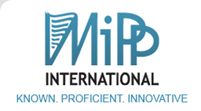Ergunova O.T., Pyankova S.G., Isaeva I.E. Strategic Management Model of Federal Entities of Ural Federal District in the Russian Federation in the Context of Interregional Integration
Olga T. Ergunova
Higher School of Production Management Peter the Great St. Petersburg Polytechnic University, Saint Petersburg, Russian Federation;
Lovely Professional University, Phagwara, India
Svetlana G. Pyankova
Ural State Economic University, Yekaterinburg, Russian Federation
Iraida E. Isaeva
Volgograd State University, Volgograd, Russian Federation
Abstract. The authors of the article studied trends in regional integration in the Russian Federation in the context of transformation processes and globalization changes in the world. The subject of the study is the trend of regionalization of integration processes in the Russian Federation, taking into account the transformation of the external environment. In the context of the issue, the authors tried to show current trends in interregional integration using the example of the Ural Federal District of the Russian Federation in the context of strategic management of regional integration processes. The article offers a methodology for the strategic management of the social and economic development of regions. The research methods in the article were the methods of systematization and generalization, as well as the method of content analysis. The suggested methodological approach to strategic management of regional integration of constituent entities of the Russian Federation allows us to develop an efficient system of techniques for managerial decision-making. While examining the category of integration, the authors noted that it is closely related to the category of space and also concluded that the more intense and varied the interaction between agents belonging to different territorial units, the higher the degree of integration. The social and economic consequences of competition between the constituent entities of the Russian Federation for resources are of particular interest today in light of the extreme differentiation of regions and the growing gap between them. The study identified industries in the constituent entities of the Ural Federal District where regional integration is most actively observed. The authors of the article also found that interaction between regions is carried out through the transfer of functions in the fields of housing policy, tourism, services and retail trade. The article identifies the main trends in regional integration in the areas of various types of interregional flows: imports and exports, migration, information, and investments, and also evaluates the effects of regional integration.
Key words: strategic management, region, regional integration, management technologies, digitalization.
Citation. Ergunova O.T., Pyankova S.G., Isaeva I.E., 2023. Strategic Management Model of Federal Entities of Ural Federal District in the Russian Federation in the Context of Interregional Integration. Regionalnaya ekonomika. Yug Rossii [Regional Economy. South of Russia], vol. 11, no. 4, pp. 41-53. (in Russian). DOI: https://doi.org/10.15688/re.volsu.2023.4.4
Attachments: /upload/medialibrary/618/vdd8v5x764rc7kc7vmo8mu7f9oy329zw.pdf







